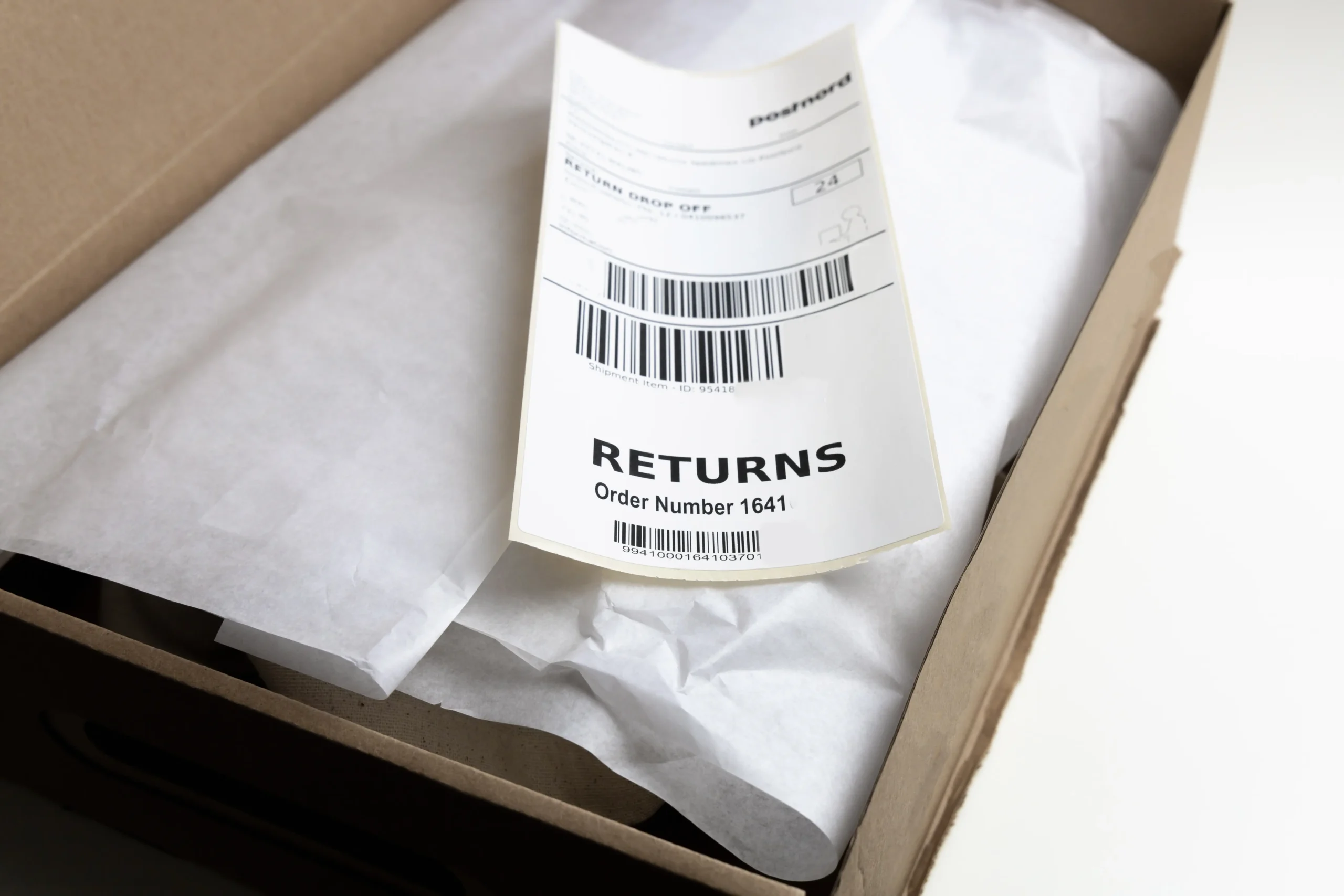What is eco-friendly shipping?
Zero emissions shipping may be a long ways away, but there are plenty of options out there to reduce your shipping carbon footprint. This includes using biodegradable packaging, recycled materials, the right box sizes, and hiring vendors that don’t pollute the environment.
This article will discuss why eco-friendly shipping is vital for the environment and everyone who lives on this planet. We’ll also identify some of the most common shipping pollutants and ways to eliminate or reduce the environmental impact of shipping.
The Need for Eco-Friendly Shipping
According to the EPA, the U.S. produces 77.9 tons of packaging every year. This is equal to almost 30% of the total annual waste generated. Considering that the majority of this packaging waste is plastic, it is essential for eCommerce companies and their partners to take proactive steps to shift towards eco-friendly shipping options.
The problem with plastic packaging solutions is that they don’t actually decompose. Instead, they break down into what is called microplastics—a source of toxic chemicals responsible for air and marine pollution.
When shippers use green packaging, their shipping activities generate less waste than traditional packaging (plastic-based), and are not harmful to the environment. Biodegradable packaging (plant-based packaging) doesn’t even require recycling as it can be easily composted in your home.
Bubble wrap, poly mailers, and plastic mailers are overflowing landfills
Rigid material such as bubble wrap make up 46 percent of the almost 14 million tons of new plastic waste that ends up in oceans every year.
Similarly, a plastic mailer is a single-use product packaging option that gets quickly discarded once the parcel is delivered to the customer (not to mention other complimentary shipping supplies like poly mailers and bubble wrap that end up in landfills).
The packaging materials you use directly affect the environment. For example, corrugated plastic boxes are commonly used because they are lightweight, durable, and inexpensive. However, the cardboard is coated with wax or plastic and that means it cannot be recycled with regular corrugated boxes.
Fuel emissions in transportation
Transportation is the largest contributor of greenhouse gas emissions at 29%
The massive amount of goods involved in global shipping results in an ever-growing carbon footprint.
More than 70% of global transport CO2 emissions come from ground transport, affecting the air quality and contributing to the rise in global temperatures.
Other hazardous pollutants in the atmosphere include sulfur oxide (SOx) and nitrous oxide (NOx) that contribute to climate change.
Rush delivery and two-day shipping expectations
Last mile delivery is the 2nd major cause of shipping pollution, first being freight movement.
Customers’ demand for fast shipping is another contributing factor to climate change.
Nonetheless, according to a 2021 survey, 91% of consumers want an eco-friendly shipping option, and more than half of them are even willing to pay another 10% for a more environmentally friendly option.
Next-day or 2-day is appealing and convenient for the customers and most businesses compete with each other to offer fast shipping, but it doesn’t come without a price for the environment.
Similarly, shipping individual items in separate packaging increases the volume of shipping materials and the fuel emissions to deliver them.
Increased eCommerce return rates
10 percent of goods sold in the US are returned to retailers every year, resulting in about 369 billion dollars in lost sales.
It is necessary to look for ways to reduce eCommerce returns as it doesn’t just impact economics but also the environment.
Not to mention the environmental impact in terms of increased transportation costs, tons of packaging waste, and discarded products.
There are 15 million tons of carbon emissions due to product returns. In addition, as businesses lose 10 percent of their annual sales in returns, they overproduce to cover the cost of lost goods, which is even more damaging to the environment.
Some eCommerce companies use returns management software to reduce the impact of returns on the environment and optimize their reverse logistics process. This allows retailers to better manage and resell returns in local returns.
5 Alternatives for More Sustainable Shipping and Delivery
A global focus on climate change highlights the need for carbon-neutral shipping. As countries are taking steps to cut emissions, it’s an opportune time for online businesses and their partners to solve environmental issues by embracing green shipping.
Here are five ways that eCommerce companies can promote sustainability and minimize the environmental impact of their shipping.
1. Compostable mailers in place of plastic mailers
Using compostable mailers is a great first step to make your business eco-friendly. These mailers are composed of recycled materials and offer a more sustainable alternative to plastic mailers. They also have a second adhesive strip, making them reusable, resulting in fewer carbon emissions.
Compostable packaging material can be produced using less resources and energy compared to synthetic materials like plastic.
Most compostable packaging is recyclable and even if it ends up in landfills, it degrades relatively faster, depending on the environment conditions.
Creating compost enhances soil quality and supports organic life, benefitting the local environment.
2. Try eco-friendly packaging like kraft paper.
The EPA estimates that the United States produces 380 billion plastics wrapping and bags each year. It takes around 12 million barrels of oil to produce this much plastic.
You should be careful when choosing the packaging for your products. It is important to go for sturdy packaging options to safely deliver your products, however, there are some steps you can take to minimize packaging waste.
For instance, you should use sustainable packaging and shipping materials like biodegradable packing peanuts and compostable mailer bags.
Use biodegradable packaging like kraft bags as they have lower environmental impact. Kraft bags are composed of wood pulp that is discarded when regular paper products are produced.
It offers a sustainable packaging option as all the materials that go into its manufacturing can be reused.
Moreover, kraft paper bags can be easily composted in municipal composters or at home.
Kraft paper bags and boxes aren’t bleached, so they aren’t harmful for the environment compared to other bleached paper products.
However, note that compostable cardboards that are heavily coated with petroleum-based inks should not be recycled as they contain pollutants and harmful chemicals that are bad for the environment.
Shippers should also avoid unnecessarily stuffing packages with polybags.
3. Other biodegradable and recyclable materials.
While it may not be possible to eliminate the use of plastic at this point, you can transition to using sustainable packaging materials.
One example is bioplastics. Bioplastics are plastic materials that are produced from plant-based materials like vegetable oils and fats, corn starch, and recycled food waste. They produce significantly less greenhouse gasses than petroleum based plastics over their lifetime.
Bioplastics can be composted and recycled, however, they can contaminate plastic recycling streams.
Then, there’s biodegradable plastic packaging. Biodegradable plastics are derived from plant or animal-based material such as soybeans, orange peels, and micro-organisms. They degrade, breakdown, or degrade when exposed to light, heat, or water. They are commonly used to produce biodegradable packing peanuts, bubble wrappings, mailing bags, and shipping envelopes.
However, dumping biodegradable plastics in landfills may produce methane which is 84 times more potent than CO2.
Plant fibers like cotton are also great packaging materials to use as product wrappings.
Inflatable air pillows are a great alternative to non-recyclable styrofoam peanuts for protecting your products. Even though they are produced from recycled materials, they can’t be composted as they’re made from plastic-based materials.
Similarly, you can use corrugated bubble wraps made of recycled cardboard to provide cushioning to your products. Corrugated bubble wraps are both recyclable and compostable.
4. Consolidate orders from the same user into one package.
One way environmentally conscious eCommerce businesses implement eco-friendly shipping is by creating sustainable returns programs for their products.
Secondly, order consolidation offers more eco-friendly options as it results in less carbon emission and packaging material waste. Consolidated shipments result in less use of packaging materials, like plastic bags, cushioning, stickers, and packing tape.
Moreover, when you package and ship more products together on the same vehicle, it reduces fuel costs and optimizes delivery operations.
5. Stabilize your supply chain operations with a logistics intelligence tool
Last mile delivery doesn’t just bring additional costs and operational complexity to your supply chain, it’s responsible for greenhouse emissions.
But logistics intelligence tools can help you optimize and reduce it’s impact to your bottom line.
eCommerce companies can improve the sustainability of their last mile delivery process by storing inventory closer to their customers using third-party fulfillment centers. Moreover, artificial intelligence can enable companies to identify more fuel-efficient delivery routes.
According to Accenture and Frontier Economics, eCommerce businesses can reduce up to 26% by 2025 using local fulfillment centers.
According to a 2020 Gartner report, 27 percent of online business owners said that they use digital technologies like advanced analytics and artificial intelligence to improve their reverse logistics process such as optimizing routes for picking up returned goods.
Sustainable packaging is the future, and Sifted can help you prepare for that
We uncovered some of the common ways traditional shipping harms the environment, and discussed ways we can implement eco-friendly shipping in our online businesses.
One way we figured out to reduce your carbon footprint is by optimizing logistics operations to identify low cost, environmentally-friendly routes.
Sifted’s Logistics Intelligence solution can help eCommerce businesses get the tools and insights to transition to a sustainable business model.
Ready to optimize your shipping operations for a smaller carbon footprint? Get a demo of Sifted!











